AppleTV+ - For all mankind Season : Craft Virtual press conference
By Mulder, Zoom Event, 01 may 2021
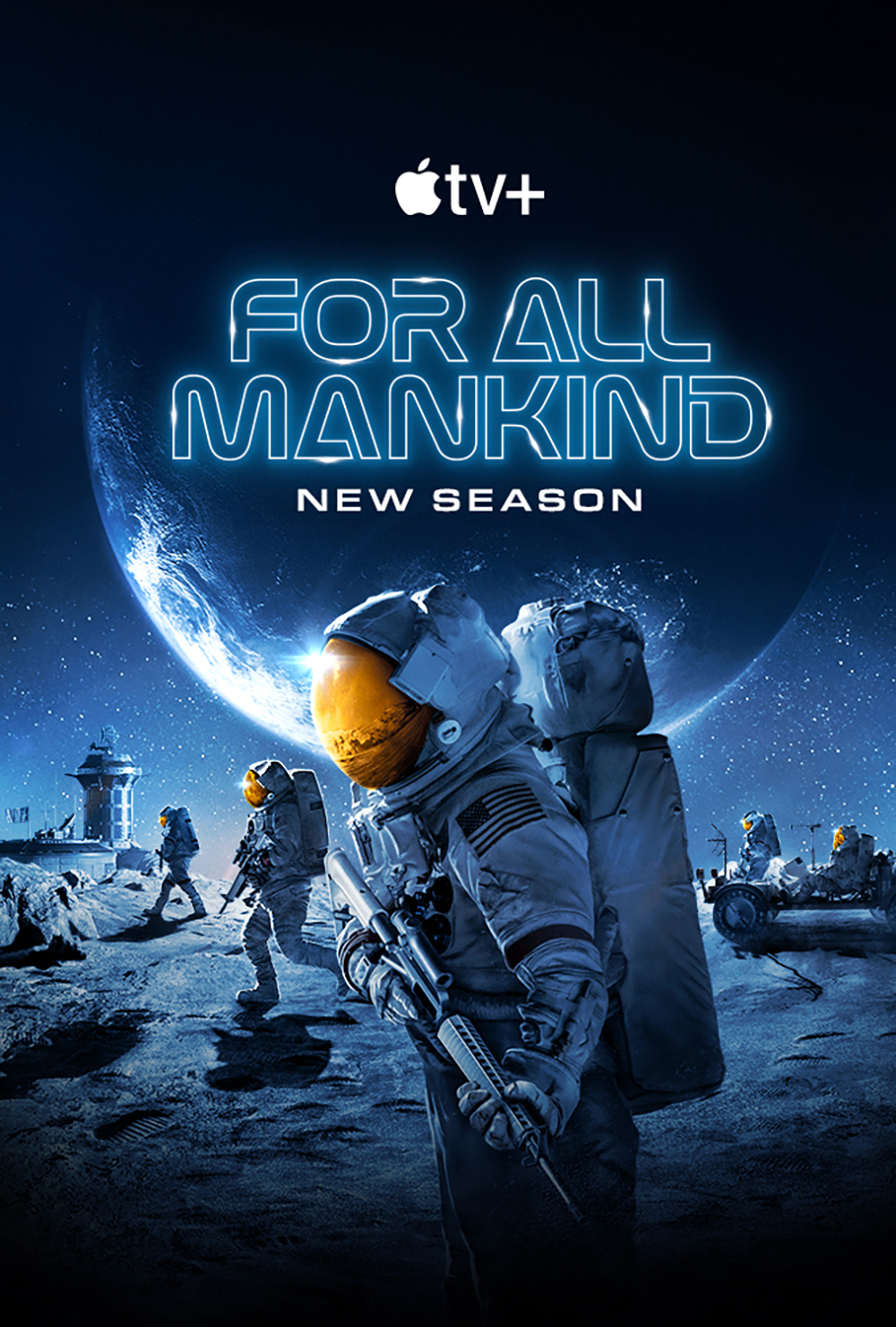
For All Mankind is an American science fiction streaming television series created and written by Ronald D. Moore, Matt Wolpert and Ben Nedivi and produced for Apple TV+. The series dramatizes an alternate history depicting "what would have happened if the global space race had never ended" after the Soviet Union succeeds in the first crewed Moon landing ahead of the United States. The series stars Joel Kinnaman in the lead role as fictional NASA astronaut Edward Baldwin, with Michael Dorman, Sarah Jones, Shantel VanSanten, Jodi Balfour, and Wrenn Schmidt in other starring roles. The series features historical figures including Apollo 11 crewmembers Neil Armstrong, Buzz Aldrin and Michael Collins, rocket scientist Wernher von Braun, Richard Nixon, Ted Kennedy (who in the series' alternate timeline became president after Nixon), and Ronald Reagan. For All Mankind premiered on November 1, 2019, and was renewed by Apple TV+ in October 2019 for a second season, which premiered on February 19, 2021. In December 2020, ahead of the second season premiere, the series was renewed for a third season.
We have the luck today to assist to a virtual press conference with Stephen McNutt (Cinematographer), Jay Redd (VFX Supervisor), Jill Ohanneson (Costume Designer), Vince Balunas (Sound Designer) and John Milo Train (Sound Designer)
Q : my question is to Jill. What was the biggest challenge in reproducing the customs to balance between the two words in the show ?
Jill Ohanneson : well first of all I had kind of two different teams working all the time I had a civilian period costume team working and then I had a space and military team working and what I basically did from the beginning is I talked with Ron about having different color palettes for the NASA world versus the world of the astronauts and their families you know out at the outpost and things like that so we went with a cooler more kind of clinical color palette sleeker for NASA blues grays forest greens things like that a lot of black and gray and then we went with a much warmer color palette for the astronauts and their families. All earth tones you know browns yellows oranges lime greens and so that I felt like really separated the world and gave you the idea that NASA has its own kind of feeling to it and I felt like it worked pretty well and i think Ron was pretty happy with it
Q : When you were creating this was there a lot of like any challenges because of the pandemic and i guess this goes to all of you ?
Stephen McNutt : i don't think that the pandemic didn't hit us until march. We were only two weeks away from finishing the final episode of 10 which was the most climactic part so we were out of town but other than that coming back we were one of the first on the lot I think actually we were the only people on the lot when we came back all alone were wandering around being tested every five minutes I got tested five days a week twice on Wednesdays and so we were trying to figure out how to work under those conditions and ultimately it worked out pretty well you know you know it's you know it's a pain but it's worth it.
Jay Redd : I think it turned out well i know I can speak to the visual effects is that when we got shut down when the pandemic hit in march i guess right is when that happened well all of our visual effects teams still had to continue producing work and so what happened is a lot of the studios shut down and had to migrate their artists home sending keyboards monitors figuring out a way to work remotely so that the show could keep going behind the scenes and so visual effects has been a little bit ahead of the curve because people are working all over the world now and you don't even know where a studio is established you know it's sometimes you know you've got method Vancouver Montreal LA New York and we're working with them so all of our artists became very virtual over the over the pandemic so in addition to shooting it was that kind of behind the scenes of migrating everybody into a new way of working and doing reviews but we only had a couple weeks down time with most of our teams and we kind of came roaring right back with amazing technology and support teams around the globe.
John Milo Train : our biggest limitation is we work on a 60-foot square soundstage to mix the show and you can't bring that home and there are Vince has a really fantastic home studio I have a moderately good home studio but we all kind of had to figure out a new game plan and it was definitely complex it's an Atmos show it's not a five one show so there's you know a lot more complexity to the sonic environment and the channels used and we really at the time that we shut down we really could not have done this show at home and it was good that the timing worked out that the last two episodes we were able to be back into the studio to do the show another show that we work on Vince actually did have to finish at home and it was it definitely worked but also definitely hard
Jill Ohanneson: I was also going to say that that when we came back to finish up those last episodes in the fall it was definitely a whole different ball game as far as you know we had to make appointments to go to the rental houses only so many people were allowed taking clothes out and returning them and the whole dry cleaning situation was a huge deal and also already by that time Amazon had gotten so and not just Amazon but all of the retail online stores were at least a week behind so when we used to be able to get something like the next day or within a couple of days we really had to think ahead if we needed to order anything online because it was all taking at least a week.
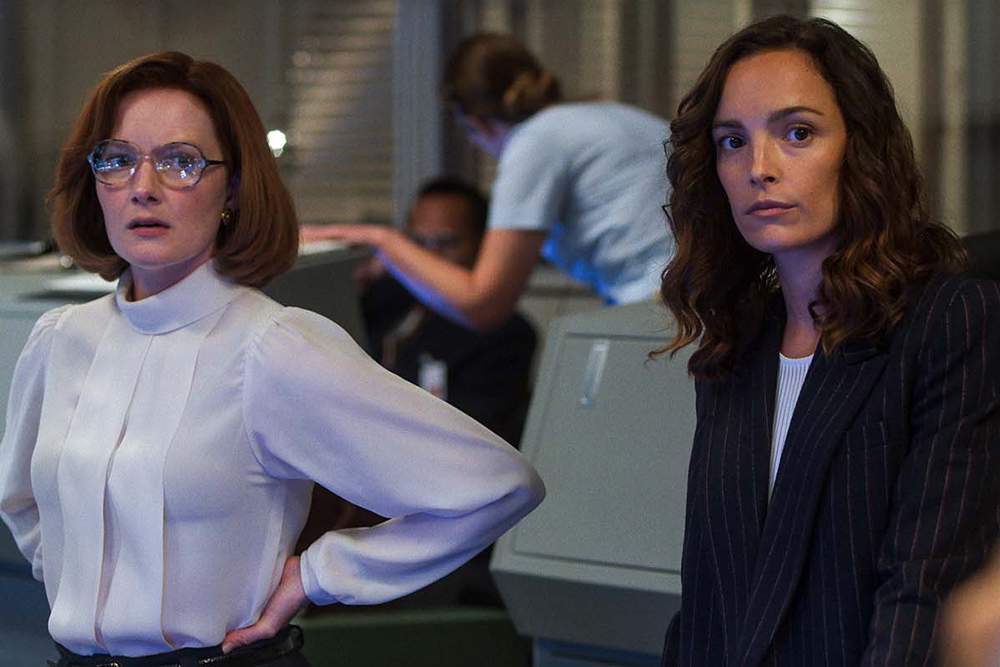
Q : Hello Stefan you are working on some great series a American gothic, Battlestar Galactica, Hellcat, Person of interest, Helix, what were your main inspirations on the look of this series ?
Stephen McNutt : Well basically we wanted it to be a bit saturated I’m going to go with Jill’s uh situation too because she was dealing with warm tones and saturated tones which is what we did as well and it was all about the soft light and I’m a guy of the 60s so I kind of knew what the 60s was and we kind of played into that glowy soft illuminating thing. We chose a certain type of lenses the other director of photography Ross Barryman is with me on this thing too and we discussed this at length when we would we were discussing lenses and choices of lenses and we went with the Sony Venice camera i wonder why we did that anyway no it's a great camera it's one of the best it's a huge outstanding camera to Venice and so we went with the cook s forest which is the quality of the lens was soft which I think you know helped out and you know complemented all the things that we were doing we were looking at movies and doing our research to try to give it some form of a you know an ethereal type of 60s glow which is was you know the day that was quite beautiful in that day. Moonligh,t you know all of those types of things played very permanently into our show we wanted to get as much moonlight in as we could any time we could, we would play entire scenes you know moonlight rooms were off it was flooded with moonlight everywhere we could we accented moonlight as just as a basic character on the moon and when we were on the moon when the sun when we got out of the sun, we called it earth light so the earth light came through so it was all about all about the moon so that's what inspired us.
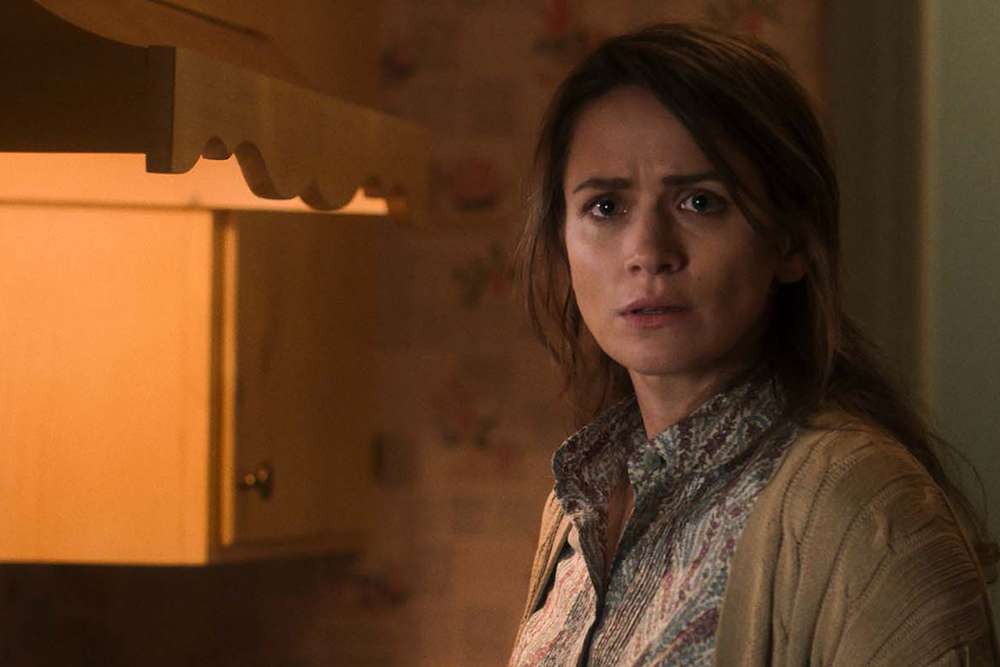
Q : this is for Stephen what effects challenges did you face in the Apollo Soyouz space docking and also the challenges on the moon shuttle sequences where you had a lot of motion on the moon vehicles on the moon
Stephen McNutt : well this was a kind of a combination being myself and the magnificent Jay Redd that we had to put together a lot of these things. We had Todd Schneider our stunt coordinator we shot various things and of course Jay made it bigger and better. We dealt with this off speed that was one of the things that we dealt with we had to find out what frame rate we liked on the moon and that turned out to be 32 frames per second pretty much and then Todd took care of the wire work which then allowed the people to move around in a very you know moon-like way and is that the question you're asking.
Q : yeah in particular especially the motion that you had these space vehicles moving across the moon's surface and you had the astronauts hanging on outside which had you've got motion of the astronauts hanging outside and you've got the motion of the vehicle moving across the surface of the moon did that present a unique challenge
Stephen McNutt : well yeah I mean the we didn't have that much room to move so we drove it as far as we could and then we just didn't just continue to during there I don't i did not shoot the men on the on the outside of the rover did you that was all CG right
Jay Redd : yeah so there's actually the marines there's two there's a couple vehicles we have the rovers of course which we actually we shot a combination of real live action of multi-person rovers moving across you know 50 70 feet and then we had big aerial shots that were actually cg that were you know a combination of live-action and CG but then the what we have the l-sand which is actually flying across the surface of the moon with the marines on the back we actually shot some with real marines on close-ups when you see faces and you kind of pull back away we're replacing the entire background so it's an illusion right is you're filming with a crane and having people on the back of that thing and then pulling away but we're replacing all of the background to make it look like you're traveling so it's a big illusion when you see the stage photography it looks kind of ridiculous actually because you're just photographing people standing on a platform but then we also had a mixture of full CG marines on the back of the lsm as well so it was a taking cues off Stephen and Ross's lighting and then we matched that in with our artists using computers to do the other ones
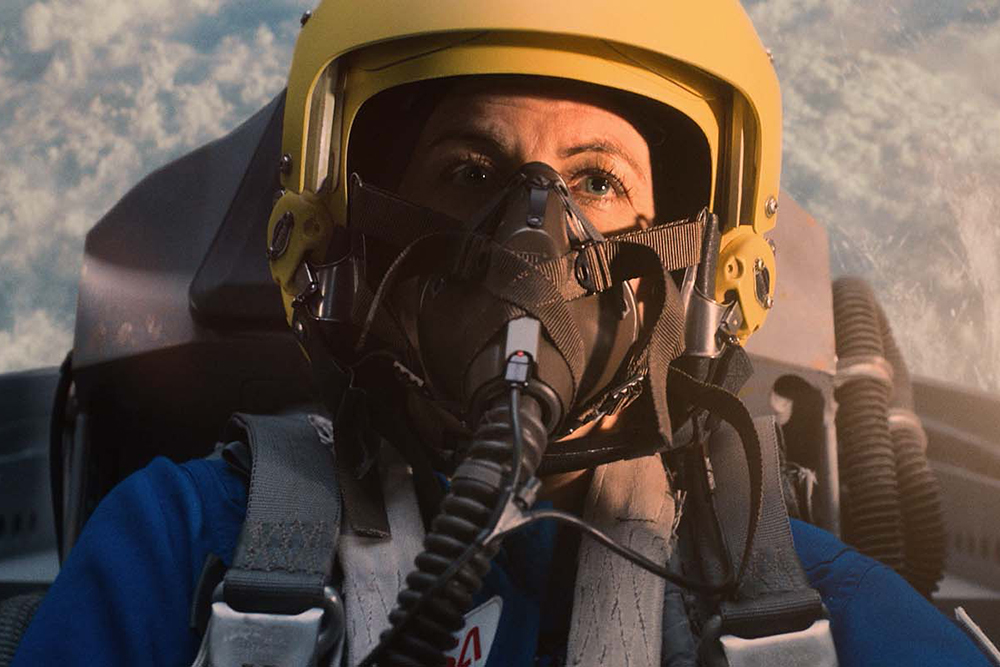
Q : did you guys storyboard those scenes ?
Jay Redd : often, we would often storyboard and then we would go into previz as well right which is kind of a rough kind of video game style visualization of what we and what we ultimately wanted the shots to be.
Q : Hi guys great to talk to you being that this is an alternate history and not recreating something that actually happened it's a mixture of history and old history. Speak to the freedoms you had like even in like fashion special effects and even sounds that you could create something that was unique to this show and not be kind of trapped in the historical perspective of it .
Stephen McNutt : that's a tough question. I think we did what we needed to do with within the story and the spirit of the scene. We were also pulled back quite often about that wouldn't be this way and that wouldn't be that way but i don't think we really had too many restrictions other than architecture and certain elements of technology that would not have been there because we're sticking with the reality of a you know 85 even though we're on the moon. We're just taking our technology from that time and putting it on the moon and then just taking the license of saying well we got all kinds of gizmos in there that allow us to do that that we didn't have but we still have, you know, this is we still don't have a laptop computer that you know so that's kind of it's kind of a gray area and you know they take advantage of that
Jay Redd : we talk about everything don't we almost like we talk about all the details and everything is a choice nothing shows up on screen accidentally like oops we didn't think about that it's like everything gets discussed. I mean I’ll say from a visual effects standpoint like we start with the rules and then we bend and break them kind of where we need to but it's always great to have a technical and a reality foundation then we can say well you know maybe the sun's a little higher just because it looks better or we're going to film a part of the ship that you could never get to historically but let's show this and maybe play with physics a little bit to really bring the drama out in something
Stephen McNutt : and sometimes the situation gets a little bit strange I guess but we're uh we're I’ll choose a light I’ll say listen I’d like to put this light or have this light in the scene and then I’m told well that's really not part of the time frame but we're on the moon so you go okay well so we have you we have to follow a certain we're following a certain path of reality in our world that we remember in the 80s or whatever but we're taking it and putting it into an expanded universe which seemingly it works it gives it an odd feel so i think that's a good thing .
John Milo Train : one of the fun things about sound is that you know we have records of what a lot of these things look like right we don't have really any good records of what they sounded like right that aren't that isn't coming through you know radio hash on communication so we really had to build everything from scratch and it began with Vince and Karen our wonderful effects editor sort of talking about what are the technical things that need to happen you know say we're in Jamestown or you know we're in some other environment what do they need they need air they need power they you know. There's a shot going through the lab where Tracy kind of first discovers that there's you know a lab and potentially alcohol. We have centrifuges and other lab equipment playing that we use later on throughout the show to kind of give more texture to Jamestown but all of that has to be built based on a conversation of you know what do they need what are we going to hear because none of it exists you know the set itself is as silent as we can make it and then you know kind of a smaller point of that which I think is a lot of fun is the interplay between flight control and dot com the idea is that in in the defense control space that we kind of move off to the side every once in a while into all the equipment that's in flight control has got to get wedged into this closet and it's kind of your standard military solution of well give us everything we'll figure out a broom closet to stick it into and a guy to manage it and it'll be fine and so we get to play that sort of interplay of okay now this 80 foot space is wedged into a broom closet and maybe there's some other communications equipment that we're not supposed to know about whizzing away but we don't really care about those guys hearing so it's fine we'll just you know it's going to be loud it's going to be hot it's going to work .
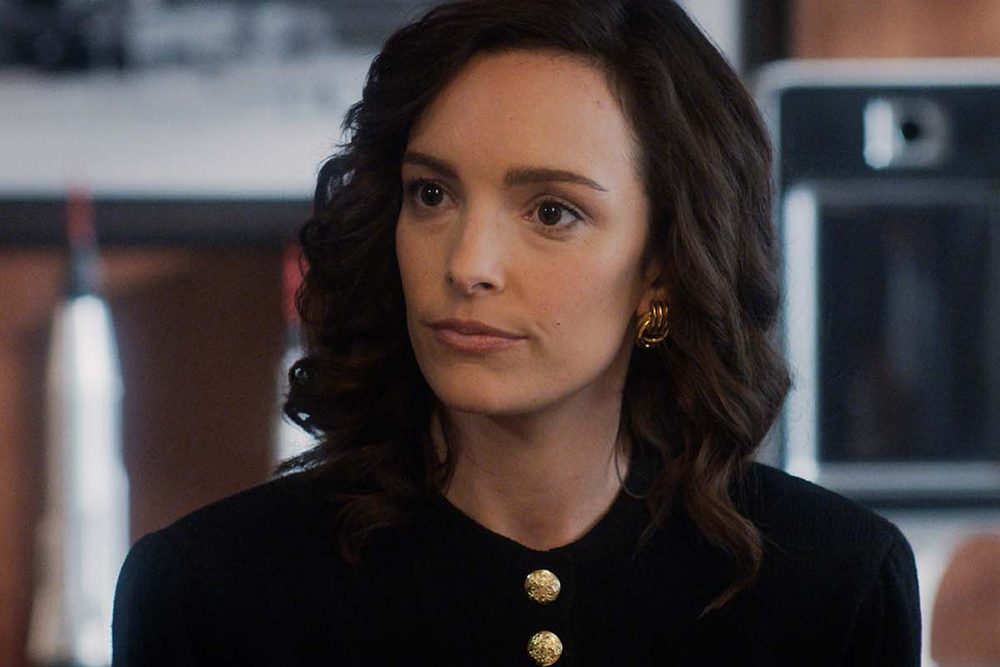
Q : i want you to know if you guys had any kind of a specialist to consult with to be more on the real side of the story and about the technology that you were dealing with it was not what we have right now it was from another time we know that there are some difference how was to adapt everything to the series ?
Jill Ohanneson : We had a lovely astronaut tech his name was Garrett Reisman and he has been with us since the beginning and has done a lot of work over at SpaceX and he really was very valuable with information about how things worked what would work what wouldn't work and was really incredibly helpful for me as far as you know when i was creating uniforms for the lunar base and for the different shuttle missions that were happening it was very helpful to be able to talk with him.
Stephen McNutt : he's in the show that was when we were flying out of the moon after the correct after the solar storm and Molly was going back to earth and it was the 202. He's in the car episode two and you'll see him in the shuttle and he'll tell Cobb to sit down or something like that he's just he's a remarkable guy with a whole lot of information so it's pretty cool to have him around.
Jay Redd : : we also had Michael and Denise Okuda known the Okuda who were with us often behind the scenes but also on set constantly making sure that people were pushing the right buttons and the sequences of events were happening because again trying to stay in in reality on some level but also helping tell a dramatic story and you know they've been around for a while and have come from Star Trek shows and worked with Ron for quite a while and so they're not only designers they help come up with our graphs and designs for all the technical data on screens but they know the sequences of operations and that are full of technical information but also being able to interpret that into an artistic way and so we have great conversations with them and they're always there on set supporting us and reading scripts and sending notes and so we have a really great group of people. constantly learning from everybody every day
Stephen McNutt : i'm really glad we have those that those that group because they just they keep us honest i mean sometimes they get us to the point like we were talking about just the other day about where's the sun is supposed to be and this thing and they'll tell you where the sun is supposed to be well we'll say well we don't really want the sun to be there we break stuff we're gonna we're gonna
Jay Redd : sometimes a quote. i don't think anybody what i learned they may not know i mean sometimes this is a strange thing to say but this is from a mentor of mine from 20 years ago who worked on Star Wars films is sometimes reality can be boring so we have to kind of interpret that into something dramatic interesting take
Jill Ohanneson : creative license to make it work all together.
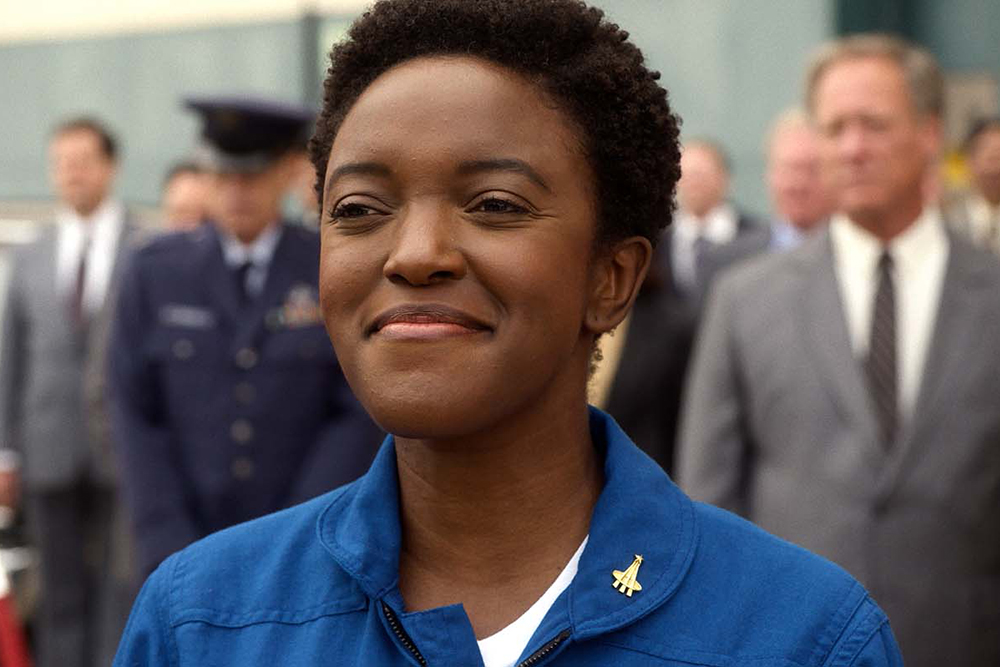
Q : my question's for Jill i know we just kind of touched on there being consultants and but I’m really interested in creating these how you created these astronaut suits because they look like I feel like they're real astronauts
Jill Ohanneson : well i have to i have to be honest and say that the actual spacesuits from season one and two came from a third-party vendor um global effects and they are a specialist in spacesuits and actually send their texts along with the spacesuits because when you put a spacesuit on it's not like a regular costume it's literally like the actor or the stunt person is putting on a machine because it has to protect you from the elements it also has to have a breathing apparatus it has to have a cooling apparatus so they're incredibly heavy very stiff and hard to move around and they break down a lot so we constantly had a lot so we constantly had texts from global effects working with us on set getting them in and out of the suits and maintaining the suits as we went along and we had a lot of switching out between the actors and stunts and also for visual effects for jay we were changing lenses and visors a lot so that was very helpful but i think going into third season there are new spacesuits being made so that's going to be really interesting for everybody.
Q : hello Vince you are working on some great series as Eureka, Gossip girl, Agent Carter how your experience on these series help you to work on this one ?
Vince Balunas : well actually Battlestar probably was the biggest help in doing this one and then also a little show called astronaut wives club that i did uh for ABC and actually that related the first season a lot it literally we got into Karen's house and like this looks exactly like the other show it was kind of crazy but you know a lot of that communication. I remember actually on that show ABC said we couldn't use a lot of the radio communications even though it was available from NASA to use for whatever purpose you wanted you weren't allowed to use it per ABC so i had to figure out how to replicate some of the most famous speeches from the moon that you know that existed so i basically kind of got a lot of toys outboard gear and then also plug-ins to manipulate the radio communications to make it sound as most possibly accurate as possible and then once that happened we learned we couldn't understand anyone, anything anyone was saying so we kind of had to dial back the reality is some other guys are saying it's like you know the reality is one thing and then tv drama is a different thing so I think a lot of that those older shows helped a lot in kind of developing what we have now for ready communication and just kind of the overall design of space.
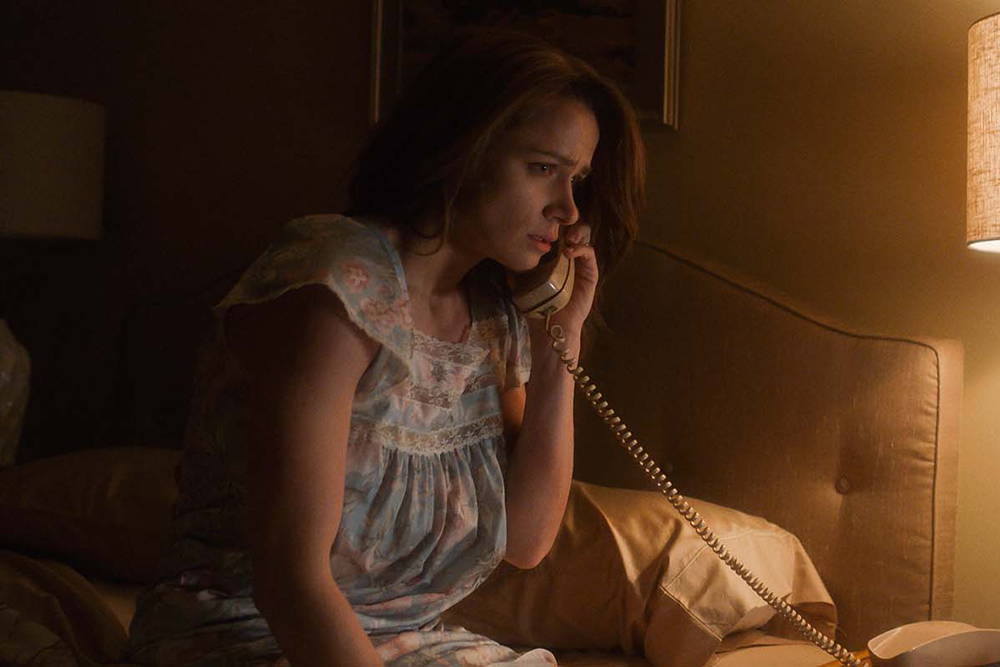
Q : i was wondering what challenges you guys faced in simulating anti-gravity the floating of objects and the simulation of people kind of bobbing up and down floating how was that handled
Stephen McNutt : : well there was a couple different ways that we did it sometimes we were on wires and the ceiling would be taken off of the vehicle and we would float them around if they had to move and traverse a distance we also use what we called well it's kind of a teeter-totter but what do we call that thing I’m getting a very well like the parallelogram which is kind of like a teeter-totter so if they stand here and we can move them up and down we can move them up around we can swing them and do that kind of stuff so that was one way we did it and when we did well one of the initial capsule stuff we turned the capsule up sideways and so this was Sergio and Micka Gazan's idea which is brilliant and he's so put sideways and so we could put the parallelogram so it looked like they were floating horizontally when we um when we shot it and that's the various things that we're up because we're up against it right now in going when we're in space but it's that's probably the biggest challenge that we do have is how do we maintain that and how do we make that feel good and working because it's very time consuming and you know but that's essentially the problem and then floating objects you know I’ll take out if I take something in my hand I may throw it to you and then it'll just fall off and then Jay picks it up and makes it go the rest of the way.
Jay Redd : and there's in the you know actors actually there's a lot of work that they're doing too so it's just like this exactly they're moving slow instead of moving around like this they may lower their hand down and kind of gesture slowly so the actors have a lot of work to do in addition to cables that the parallelogram of Steven mentioned and you know like we said before running on the moon 32 frames a second to create a sixth G microgravity looks amazing plus Todd's stunts with a little bit of cable work actor work it all kind of all the pieces come together. We hope.
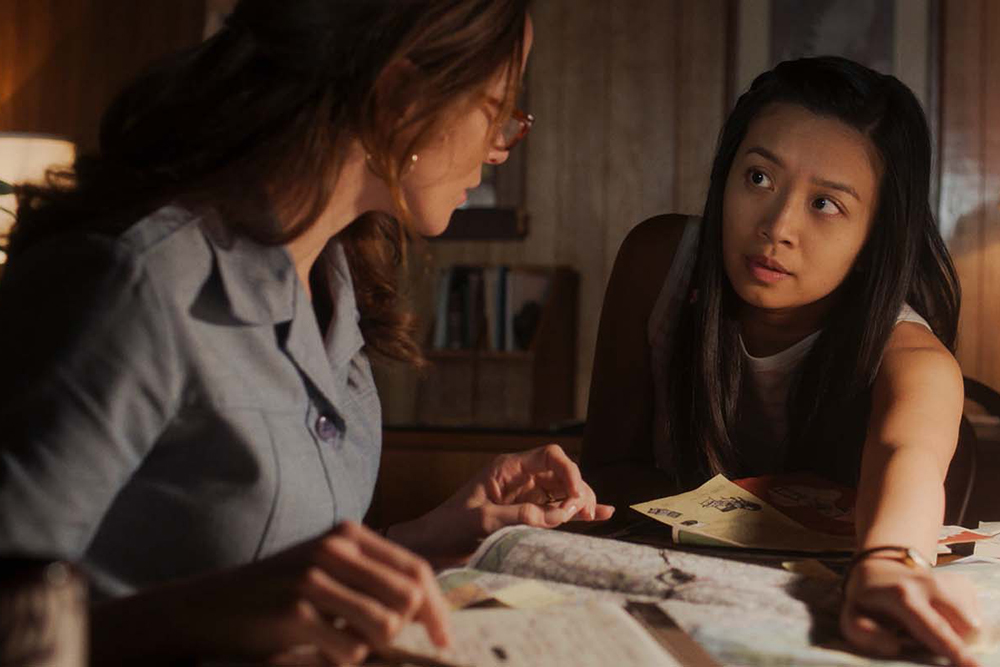
Q : I would like to ask to Jay how did you approach shooting scenes on the moon ?
Jay Redd : well we tried to go to the moon to shoot it but it turned out to be pretty complicated to get it that was a hard catering was the biggest problem on them no well. I got to say that we worked really happily and closely with Stephen and Ross on this. The short version is that we built kind of a sandbox by you know what was it 70 feet by 120 feet or something in a giant warehouse in an old Boeing airplane repair warehouse at long beach and that was our biggest stage where it was literally kind of like going on into a sandbox and dan bishop and his team the production designer would build boulders and we had this gray gravel gray sand that looked like the regolith from the moon so it had that similar color to base on all the photographs and evidence that was brought back from the Apollo times and Steven put up a giant sunlight was that thing 100k..I can be wrong that was 100k single go ahead .
Stephen McNutt : I was going to say that when we started researching that and we were checking out the color of the ground and all that kind of stuff we realized it was the challenge that we were going to have obviously is making the sunlight work for us because there is only one light and so we the real effort was getting it far enough away from the set because the further the light is away the more even the light is over a larger distance i mean the sun is 93 million miles away so the lights the intensity of the light on the ground is the same as the intensity up in the stratosphere. It's all the same level because it's so far away and spreads out the closer it is the harder more fall off so i could be standing here and I’d be bright and I could be standing here and i could be dark so we had that was a big challenge so once we got that up and then the other challenge was cutting the light off of everything and so my key grip Kurt Grebel and John Warner the rigging grip they built this giant iris if you will so if my face is or my eyes the light all around here was a giant black which would come in levels all the way toward you and so that in the end the only light from that 100 000 watt soft sun would fall on the surface of the moon and not around it so that you would help with Jay getting his cuts and black keep the blacks off and he was constantly yelling at us get that off that wall get it off the ceiling and so it was fun it was a challenge to do that that was the biggest challenge is really it was cutting the light because the light was all you have is that so
Jay Redd : you might notice in some of the footage or some of the photographs is that we don't shoot most the time on the moon we don't shoot against blue screen or green screen you know that's it's very typical to see in visual effects shots is you know it's green and blue everywhere well we didn't want to do that because the there's no air on the moon right there's no atmosphere so unlike earth which is like I’m looking outside right now there's a blue sky and there's light bouncing and everything on the moon first you get one light and then all it reflects is off the ground that's it so the sky is always black on the moon so we didn't want to have a bunch of blue and green contamination on Jill's awesome suits and so we shoot with black and then we have artists who meticulously trace around legs and feet per frame rotoscoping as it's called which is tracking per frame around objects and then extending the backgrounds CG hills shackle and crater putting Jamestown etc so it's a meticulous effort but we have great footage and sometimes we like the lens flare sometimes we like the dust in the air sometimes not but it was a lot of challenge and a lot of people contributed to the look of it all right.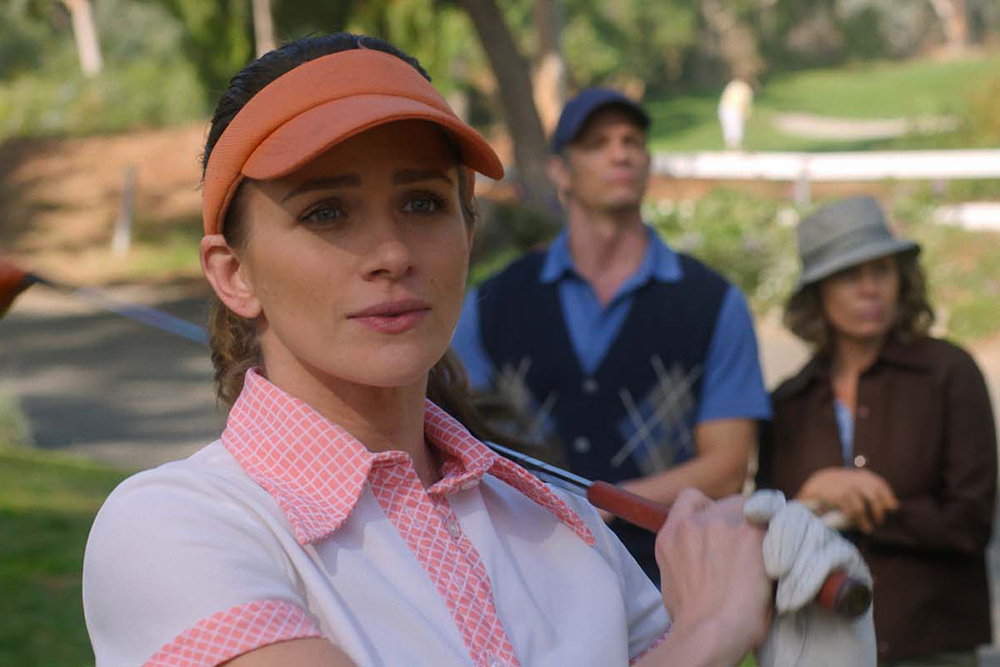
Q : hi Jill i got to ask you, you're kind of locked into a certain actually different time periods but was there room for you to kind of bring your own designs into it too because this is an alternate history
Jill Ohanneson : well one of the things that Ron wanted the costumes to be able to do because we're an alternate reality and because a lot of the technology was changing is he chose i think certain things that he wanted to stay authentic and real in order to ground the project and he definitely felt like he wanted to do with that with costumes and I felt like he did that with a lot of the homes of the astronauts you know everything that we see out outside of NASA um had a real strong organic grounding effect for this for the show and so that was that was really important to him and within that though i got to kind of create again the choosing the color palettes was something that i was able to bring to the to the table and say you know let's really show the difference between these two worlds that that Ed Baldwin and Gordo Stevens come in and out of so that was something I really got to have fun doing and then second season i got to just design a lot of a lot more uniforms as far as Jamestown and the different shuttle missions so that was also incredibly fun and then of course you know i got to build the duct tape suits at the end which for me is kind of the ultimate creative process and took a lot of people to do but we had a great time doing it so thank you
Stephen McNutt : i know you had a furrowed brow about that for a while
Jill Ohanneson : well you know we just we tested it just before we shut down and so in a way it was actually really great because it allowed the manufacturer to make you know 16 suits four for each of the actors and four for each of the stunt people and so and then you know we had to age we had to do those aging process each of the four had a different aging um station throughout the scene so we didn't have to we didn't we weren't going to have time to do it on stage on while we're filming the scene so all day long while we were shooting that scene the actors were switching and the stunt people were switching in and out of the different levels of aging on the suits so it was quite it was quite a hectic day.
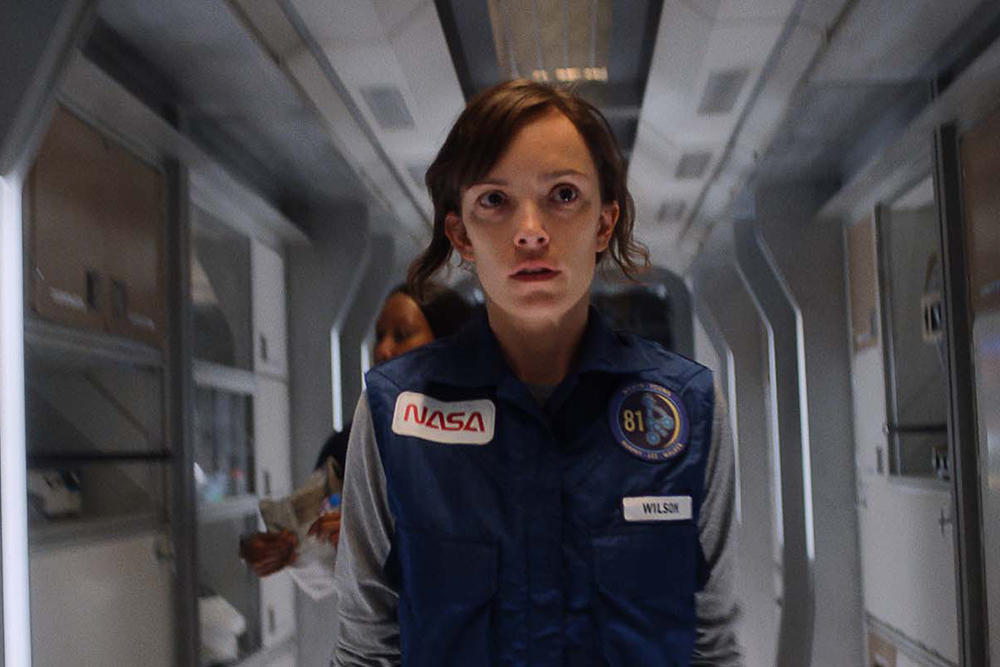
Q : hi guys got caught in the middle of the pandemics when you were finishing season two and now with season three this have any changes on what you were imagining it to be or did you have to change anything because of it how was to have to imagine the next season with the pandemics going on and all of that we are seeing right now did it have any changes for you for the creative team how was it ?
Jay Redd : : probably hits us a little differently I know that from visual effects it's very similar like a lot of our studios are still working from home we have a lot of zoom meetings like this with our teams right we were just talking about that before it's like is lots of creative meetings happen online now which would normally, we'd be gathering in conference rooms or on the sets so a lot of it is a lot of our protocols are the same as when we started shooting i guess last summer right in the middle of the pandemic even coming out of it so Stephen what else you want to add
Stephen McNutt : but on the on the set i guess I’m probably one of the only people here that live on the set and we had a lot of a lot of issues when we came back because it was all so new and no one knew what was going on that we were only able to have a certain number of background extras in we couldn't when we shot into mission control we had to do layers of people and then and or else keep them far enough away and we could only have six or seven people we did put some layers in right then we did we put Margot a couple times. We did that i know it gets all so mulled up and so that was begun issue we can't use atmosphere anymore because everybody's afraid even though there's a data out sheet out there and I’ll say this there's a data sheet out there that shows that that the atmospheric smoke that we use actually kills a virus and they use it in hospitals but nobody wants to believe me. i don't know why. Anyway, it was but it's true that that we have then we still have that problem now I mean we have a limited number of people we can only have a number of crew in there so if I have to have add something in there. I have to walk somebody else out while somebody walks in fix something then as they walk out the other person walks in and of course then the actors they don't have masks on and they take advantage of that i think but we have to wear masks all the time and when we're around them we're zone a and zone b's all of that kind of stuff is still there and it's in full force.
Jill Ohanneson : I was just going to say in in season two at the end of the show you know I remember we were going to film in the cemetery over in Westwood and they said well you can only have 10 people there at one time and that includes your actors and your crew so they ended up tiling a lot of different people in funeral wear that I think were added in later correct Jay
Jay Redd : we did a couple of tiles and we also scanned and took pictures of some of your people in funeral dress and put some digital people walking in the distance too so combination.
Stephen McNutt : so that's those are challenges and they still remain to be challenges everywhere we go when we want to shoot if there's another company there they may not be able to have two companies there so that all kinds of different things will happen once we get rid of this thing maybe if we ever get rid of this thing it'll be a whole lot better
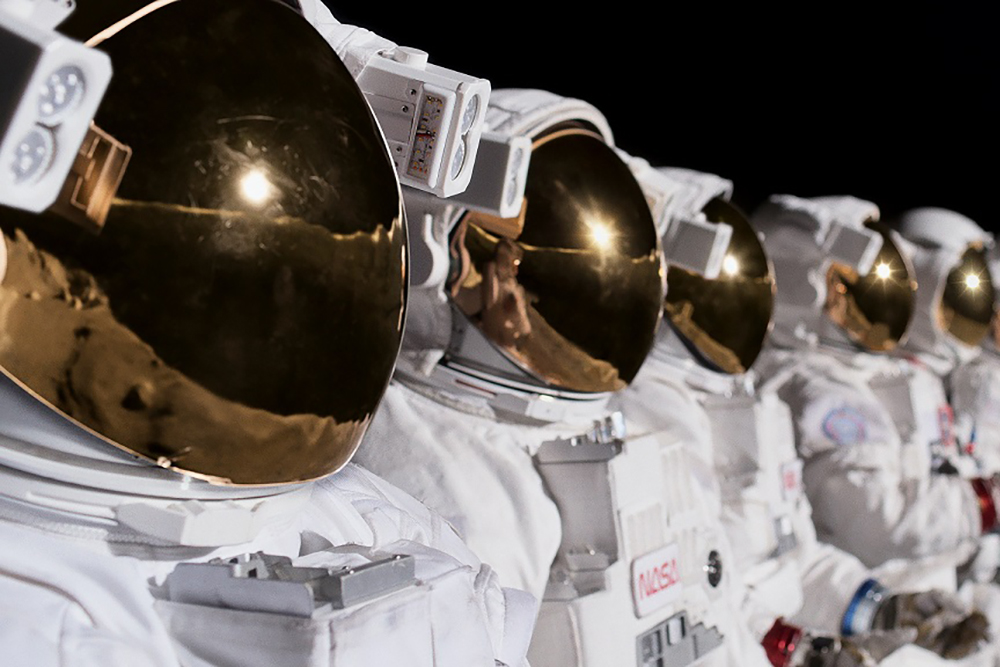
Q : for Jill in episode one of season two their solar flare impact on the surface of the moon how did you approach that ?
Jay Redd : Delicately. In this in the script when i first met with Ron there was a there's a line in the script that says the surface of the moon boils so it was a really interesting way to approach and how to interpret that and so Ron had explained to me so he imagined it in his mind like little you know like radioactive raindrops on the moon except you couldn't see them right because there's no rain on the moon but what would what would you know radiation look like when it's the biggest solar event that they've ever recorded in our episode what would that look like if it's disturbing the dust on the moon so we actually looked into some research and some history of what's happened there are Apollo astronauts that when flying back from the moon would actually see as the sun was setting or rising would see a little bit of dust right on the horizon even though when you're on the moon you don't see any dust in the air and so there was a lot of theory and speculation about electrostatic energy levitating the dust off the ground right and so we kind of ran with that I ran with that and started thinking like okay what if this were a thousand times more energy or more radiation more electrostatic electricity that could levitate or add ripples and so i started looking at you know sand dunes water moving over sand over time in the rivers we started looking at sound waves that if you've ever seen the videos of sound that can manipulate sand on a plate and they're called somatic and it makes these really interesting patterns at different tones so we started thinking well everything is a wave I’m getting kind of nerdy here but everything is a sound wave everything is an energy wave and so we thought what if we started adding ripples into it because the radiation is something you don't really feel while it's happening and you don't see it is the silent killer but we thought we can't play the sequence without anything there that's not going to be very exciting so i put together a little pitch document for Ron and the other EP about ripples sound waves spikes electricity looks that kind of thing and we started dialing things in over many weeks um i did some paintings started showing some tests and we ended up at this of this feeling of something that feels kind of serene and beautiful but also close up it's full of these spikes that can actually like
spike you with energy and so molly is running through that the entire time we wanted it to be tangible and also beautiful so it was a really delicate balance and every shot is different every shot had to have a special kind of dialing in and look to it and all of those effects have to be put in the visors too so it's a really complex scene but many delicate artists have their hands on it.
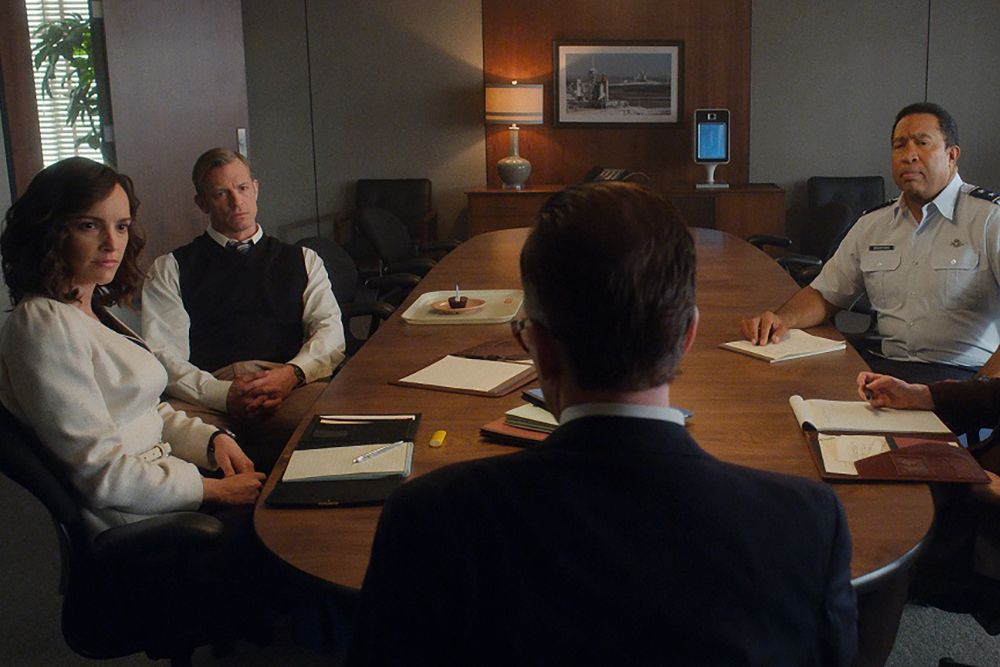
Q : I had a question regard starfield I know there's a reason for not showing star field in space but is there ever an instance where you would show a star field in space ?
Stephen McNutt : well i could speak to that a little bit because i like stars but on the in the reality of it apparently i'm talking to Garrett and other people it's the brightness on the moon is extremely bright and so obviously your eye shuts down and you really don't see many stars when you're on the surface of the moon when you're inside a lit room you don't tend to see the stars outside the room like you don't see even on earth here you look out if your room is lit you don't see the stars my argument were i think we did finally ultimately put some stars in but when we would doubt when we would go down to Shackleton clay crater or when we were out of the moon out of the light my pitch was to raise the stuff put the stars we have been putting some stars and haven't we Jay I know we have been periodically but because it makes more sense to me if you're if you're out in space and you're doing a move a spacewalk you'd see the stars because there's no light on you but then again but that that was definitely a bone of contention they didn't want but did not want any stars and so i think it's worked i think the compromises work and we do see them periodically in the real sense of it but on the moon it's so bright that you you don't see uh the starlight
Jay Redd : we had a little a little loose rulebook to person to go off Steven's comment is that when we would go to you know in episode 10 to the unlit side of the moon the dark side of the moon that's when we would imagine the exposure would come up a little bit you know when you go outside you find your eyes finally adjust and you can say oh there they are so that's you know when we're when we don't have direct sun on things we would use that as a good guide to say well let's see the stars now we'll see because it's also you kind of wanna it's hard to know where you are in space if you don't have something in the background right so we were in this really dark scenes and you notice this in episode one as well before the sun comes up you get to see the stars then when the sun rises we take that exposure down as just as Stephen mentioned and then the stars go away it's really based on how our eyes work and how photography works so i think I think it flows pretty well yeah but yes lots of discussion about when we see them and when we don't.
Synopsis :
In an alternative version of 1969, the Soviet Union beats the United States to the Moon, and the space race continues on for decades with still grander challenges and goals.
For All Mankind
Created by Ronald D. Moore, Matt Wolpert, Ben Nedivi
Directed by Meera Menon, Sergio Mimica-Gezzan, Allen Coulter, John Dahl, Seth Gordon, Dennie Gordon, Michael Morris, Andrew Stanton
Produced : Ronald D. Moore, Nichole Beattie, Maril Davis, Ben McGinnis, Ben Nedivi, Steve Oster, Bradley Thompson, Patricia Valenzuela, David Weddle, Matt Wolpert, Elicia Bessette, Naren Shankar, Seth Edelstein, Paul Knechtges, Joe Menosky, Seth Gordon
Executive producers : Ronald D. Moore, Matt Wolpert, Ben Nedivi, Maril Davis, Seth Gordon
Written by Ronald D. Moore, Ben Nedivi, Matt Wolpert, Stephanie Shannon, Nichole Beattie, Bradley Thompson, David Weddle, Joe Menosky, Naren Shankar
Cinematography : Stephen McNutt, Ross Berryman
Starring Joel Kinnaman, Michael Dorman, Sarah Jones, Shantel VanSanten, Jodi Balfour, Wrenn Schmidt, Sonya Walger, Krys Marshall, Cynthy Wu, Casey W. Johnson, Coral Peña
Composer : Jeff Russo
Production companies : Tall Ship Productions, Sony Pictures Television
Distributor : Sony Pictures Television Distribution, Apple Inc.
Release : Original network : Apple TV+
Original release : November 1, 2019 –present
Running time : 48–76 minutes
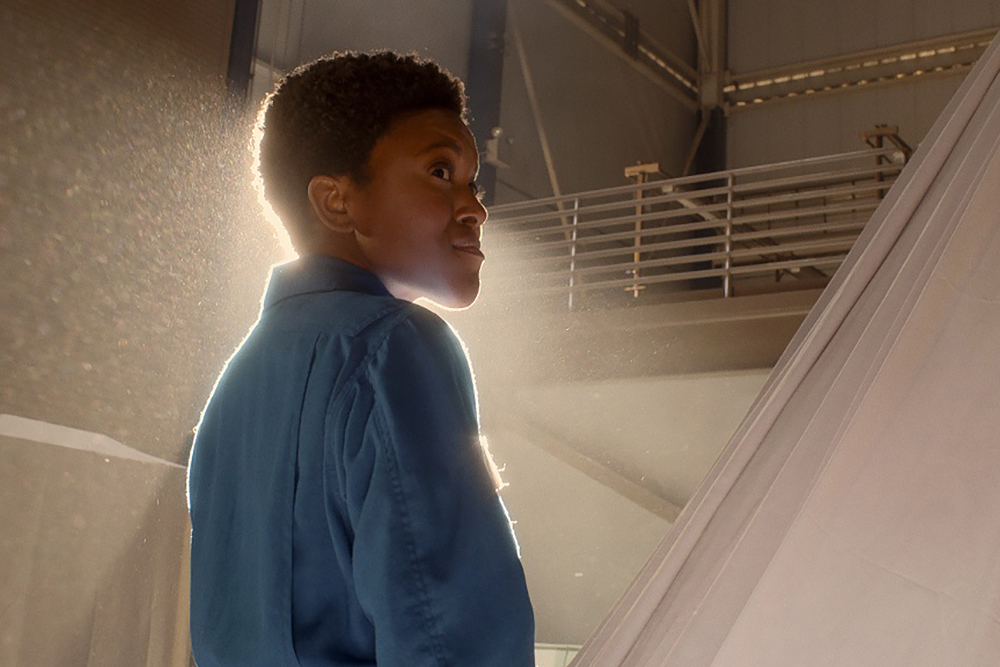
Photos : Copyright Apple TV+

